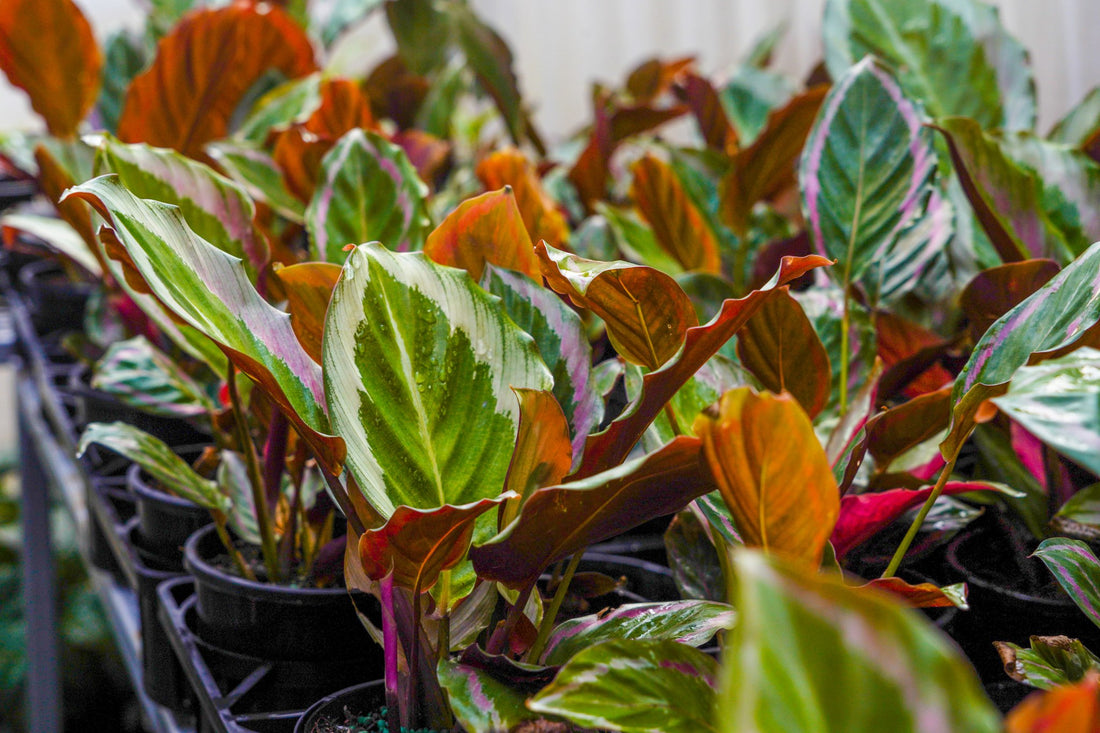
Unveiling the Challenges: Pests and Diseases That Affect Indoor Plants
When it comes to indoor and patio/alfresco plants, not all varieties are equally prone to pests and diseases. Each plant has its own vulnerabilities, and it's essential to be aware of them for successful plant care. In this blog, we'll shed light on common pests and diseases that can impact indoor plants, along with effective preventive measures.
Calatheas for example tend to get Alternaria leaf spot and fusarium root rot. To ensure this doesn’t happen it is vital to get your watering right and not to over water your plants or leave large amounts of moisture sitting on the leaf. Overhead watering can cause diseases such as leaf spot, however, many of the indoor varieties can get the common insects such as scale, aphids and mealy bugs and mainly because of the conditions they are grown in are more favourable for these insects to thrive in.
Aphids: Aphids are tiny, sap-sucking insects that can multiply rapidly and infest indoor plants. They typically cluster on new growth, feeding on the plant's sap and causing leaf curling, stunted growth, and yellowing. Look out for clusters of small insects on your plants and the presence of sticky honeydew residue. Regularly inspecting your plants and using natural or chemical remedies can help control aphid infestations.
Spider Mites: Spider mites are minuscule pests that are difficult to detect with the naked eye. They thrive in warm and dry conditions, often infesting indoor plants. These pests pierce the plant's leaves and suck out the sap, leading to stippling, yellowing, and webbing. Spider mite infestations can be mitigated by increasing humidity around the plants, regularly misting them, and employing natural or chemical treatments.
Mealybugs: Mealybugs are soft-bodied, oval-shaped insects covered in a white, cotton-like substance. They tend to congregate in plant crevices, leaf axils, and on the underside of leaves. Mealybug infestations can cause stunted growth, leaf yellowing, and the secretion of honeydew, which can attract ants and sooty mold. Control measures include manually removing the insects, using insecticidal soap, or introducing natural predators.
The most common pest of all are the dreaded fungus gnats. There are knock down insecticides for this, however, they tend to be attracted to organically enriched potting media. It is essential to get your watering right through the cooler months and to allow good airflow through the potting media and let it dry out before your next water. Fungus gnats usually thrive in temperatures from 15-25 degrees, so this is the period to concentrate on the most from winter to spring.

Photo: Yellow sticky trap
How to reduce fungus gnats
- Yellow sticky straps
- Solution of apple cider vinegar, sugar and dish washing liquid
- Biocontrol agents - Predatory mites (Hypoaspis spp.)
- Neem Oil
- Well draining and aerated potting soil.
Other diseases
Sometimes diseases can be mistaken for cold weather or injury, due to winter time being the main period in which most of these species can struggle. Tropical plants prefer humid conditions, much like their own natural environment and tend to curl their leaves when they are too cold or too hot. Increasing the temperature in winter or moving your plant into a protected area away from potential frost and artificial heating is worth doing to keep your plants healthier through this difficult time.
There are many different fungicides for photosynthetic diseases such as leaf spot, but the use of copper fungicides usually works best. There are also many insecticides on the market that will eradicate the most common insects but it’s always best to try and improve plant health through other options, such as…
- Beneficial Bacteria
- Applying the correct fertiliser at the right time
- Plant positioning
- Create a natural environment

Photo: Healthy Calathea Bicajoux Pink
Much like humans you look after us with healthy nutrition and we will also live a better and longer life with less issues down the track
